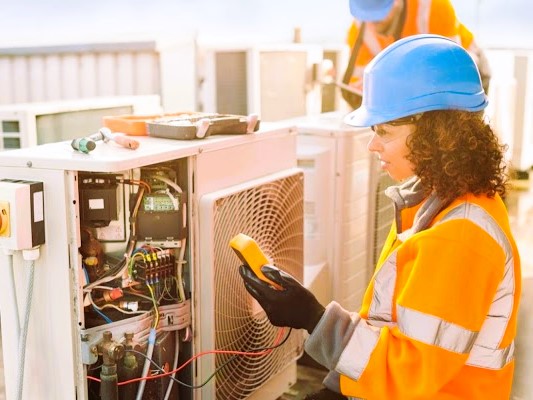The quality of indoor air has a profound impact on our health and well-being. As Canadians become increasingly aware of the importance of indoor air quality (IAQ), various initiatives and rebate programs have emerged to incentivize homeowners to adopt measures that enhance the air they breathe. This article delves into the significance of indoor air quality, explores common pollutants, and highlights rebate programs available to Canadians seeking to improve the air quality within their homes.
The Significance of Indoor Air Quality
Indoor air quality refers to the condition of the air within and around buildings, particularly as it relates to the health and comfort of occupants. Poor indoor air quality can have a range of adverse effects on health, including respiratory issues, allergies, and other long-term health concerns. Factors influencing IAQ include ventilation, humidity levels, and the presence of pollutants.
Common Indoor Air Pollutants

- Particulate Matter (PM): Particulate matter consists of tiny particles suspended in the air, often originating from sources like cooking, smoking, or outdoor pollution. Fine particles, known as PM2.5, can penetrate deep into the lungs and pose health risks.
- Volatile Organic Compounds (VOCs): VOCs are emitted as gases from certain solids or liquids, including household products such as paints, cleaning supplies, and furniture. Prolonged exposure to VOCs can lead to respiratory irritation and other health issues.
- Radon: Radon is a naturally occurring radioactive gas that can seep into homes through the ground. Prolonged exposure to elevated radon levels is a known cause of lung cancer.
- Mold and Allergens: Mold and allergens thrive in damp environments. Inhaling mold spores and allergens can trigger respiratory problems, especially in individuals with allergies or asthma.
- Carbon Monoxide (CO): CO is a colorless and odorless gas produced by the incomplete combustion of fossil fuels. Exposure to high levels of carbon monoxide can be fatal.
Importance of Rebates in Enhancing Indoor Air Quality
Recognizing the critical role of indoor air quality in public health, various levels of government in Canada have introduced rebate programs to encourage homeowners to take proactive measures in improving IAQ. These rebates not only incentivize the adoption of healthier practices but also contribute to energy efficiency and environmental sustainability.
Common Indoor Air Quality Improvement Measures Eligible for Rebates
- Ventilation Upgrades: Rebate programs often support the installation or upgrade of ventilation systems that enhance air circulation and reduce the concentration of indoor pollutants. This includes rebates for energy-efficient ventilation systems and heat recovery ventilators (HRVs).
- Air Purification Systems: Homeowners may qualify for rebates when installing air purification systems designed to remove particulate matter, allergens, and VOCs from the air. These systems contribute to a healthier indoor environment, especially for individuals with respiratory conditions.
- Radon Mitigation: Given the prevalence of radon in certain regions, rebate programs may support radon testing and mitigation efforts. This includes rebates for radon testing kits and the installation of radon mitigation systems.
- Energy-Efficient Heating and Cooling Systems: Upgrading to energy-efficient heating, ventilation, and air conditioning (HVAC) systems not only improves energy efficiency but also contributes to better indoor air quality. Rebate programs often support the installation of high-efficiency HVAC systems. Read the article about discounts for Canadians in the home automation industry.
- Mold Prevention and Remediation: Homeowners may be eligible for rebates related to mold prevention and remediation efforts. This includes measures such as proper insulation, moisture control, and ventilation improvements to deter mold growth.
- Smart Thermostats: Rebate programs promoting energy efficiency may include incentives for the installation of smart thermostats. These devices help optimize heating and cooling systems, contributing to both energy savings and improved indoor air quality.
How Canadians Can Access Indoor Air Quality Rebates

- Research Available Rebate Programs: Start by researching available indoor air quality rebate programs at the federal, provincial, or municipal levels. Government websites, such as Canada.ca, provide comprehensive information on existing programs.
- Understand Eligibility Criteria: Each rebate program may have specific eligibility criteria. Understand the requirements, including the types of measures covered, the energy efficiency standards to be met, and any documentation needed for the application.
- Engage with IAQ Professionals: Consult with indoor air quality professionals or HVAC specialists to assess the specific needs of your home. Their expertise can help you identify eligible measures and ensure that your IAQ improvement project aligns with rebate program requirements.
- Document Your Improvement Project: Keep detailed records of your indoor air quality improvement project, including receipts, before-and-after measurements, and any other documentation required by the rebate program. Thorough documentation strengthens your rebate application.
- Submit Your Rebate Application: Once your indoor air quality improvement project is complete, submit your rebate application according to the instructions provided by the relevant rebate program. Ensure that all required documents are included to expedite the processing of your application.
Conclusion
Rebates for Canadians enhancing indoor air quality play a vital role in promoting healthier living spaces and reducing the environmental impact of indoor pollutants. By taking advantage of these incentives, homeowners contribute not only to their well-being but also to the broader goals of energy efficiency and sustainability.
To explore more about indoor air quality standards and initiatives in Canada, you can refer to the official website of the Standards Council of Canada (SCC): Standards Council of Canada.
In conclusion, as Canadians prioritize the quality of the air they breathe indoors, rebate programs serve as valuable tools in facilitating improvements that benefit both individual households and the community at large.





